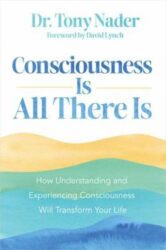Defense Against Trauma
Everything is going along just fine and then you get mugged. Afterward, the world seems different—and you find that you are anxious all the time, maybe desolate, maybe unable to focus. You may struggle with edginess and insomnia and with helplessness and vulnerability or their opposite—numbness.
Post-traumatic stress disorder (PTSD) is not just a problem of women veterans and women engaged in emergency first-response. Trauma can happen to anyone, and when it does, it can turn one’s world upside down.
The root of trauma is usually an overwhelmingly negative event that causes a lasting impact on the victim’s emotional and mental balance. Trauma can also be caused by relentless stress from a frightening situation such as living in a dangerous environment or dealing with a life-threatening disease. Anything from a car accident to a relationship break-up to a natural disaster can leave a person traumatized. It isn’t the event that is traumatic, but the subjective emotional experience of it.
Trauma from violence
According to the World Health Organization, one out of three women is assaulted. In some countries, the percentage is more than twice that. Twenty-five % of US women are likely to be assaulted by an intimate partner. Depression, anxiety, substance abuse, stress reactions, and suicide may result. Sometimes—in self-defense— a woman responds with violence, often resulting in incarceration.
Transcendental Meditation Creates Resilience
If a woman is standing at a traffic light and a car almost hits her, it is natural that her heart pound, her pulse race and her breathing become rapid. She is experiencing the ‘flight or fight’ response which is a spontaneous reaction during which the body gears up to get us out of danger. But if twenty minutes later she is still standing in the street with heart pounding, pulse racing and heavy breathing, she likely does not have the capacity to rebound quickly enough from stress. She may be traumatized. But if her body and mind had been resilient, then she would have walked away from this same incident, quickly feeling balanced again. Prevention is the key.
The TM technique reduces stress, leaving the body more flexible and the mind more unbounded—both are able to take shocks and recover quickly. Recovery time from stress decreases when a person practices the TM technique and it continues to decrease over time with regular meditation. You find that you are more and more able to experience something overwhelming and “walk away.”
Benefits for those with PTSD
Most research on the TM program and PTSD has been focused on veterans, but programs for women in many other circumstances have also shown extremely positive benefits. Evidence and subjective reports show that women who have been traumatized and subsequently learn the TM technique have fewer flashbacks and frightening memories, reduced stress and anxiety, reduced nightmares and insomnia, greater optimism and are less likely to abuse drugs and alcohol.
Recently, a group of women in Chicago who had all suffered the death of a child due to the city’s violence learned the TM technique in a program at a Humboldt Boys & Girls Club. DNAinfo Chicago reported that the mothers experienced relief from the TM practice, including clearer thinking and the ability to sleep well again. The women said that by the end of their four-day course of instruction, they could feel an inner quiet, a rediscovered inner peace.
I live in New York City where crossing the street can create trauma, thus the example I gave earlier. But with the benefits of TM practice growing steadily in my life, when that car screeches to a halt next to me, I can just roll my eyes and walk away.
About the Author
Janet Hoffman is the executive director of TM for Women Professionals, a division of TM for Women in the USA





